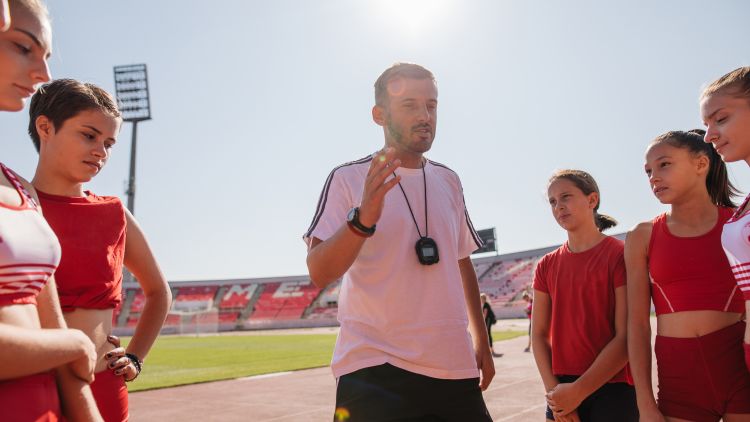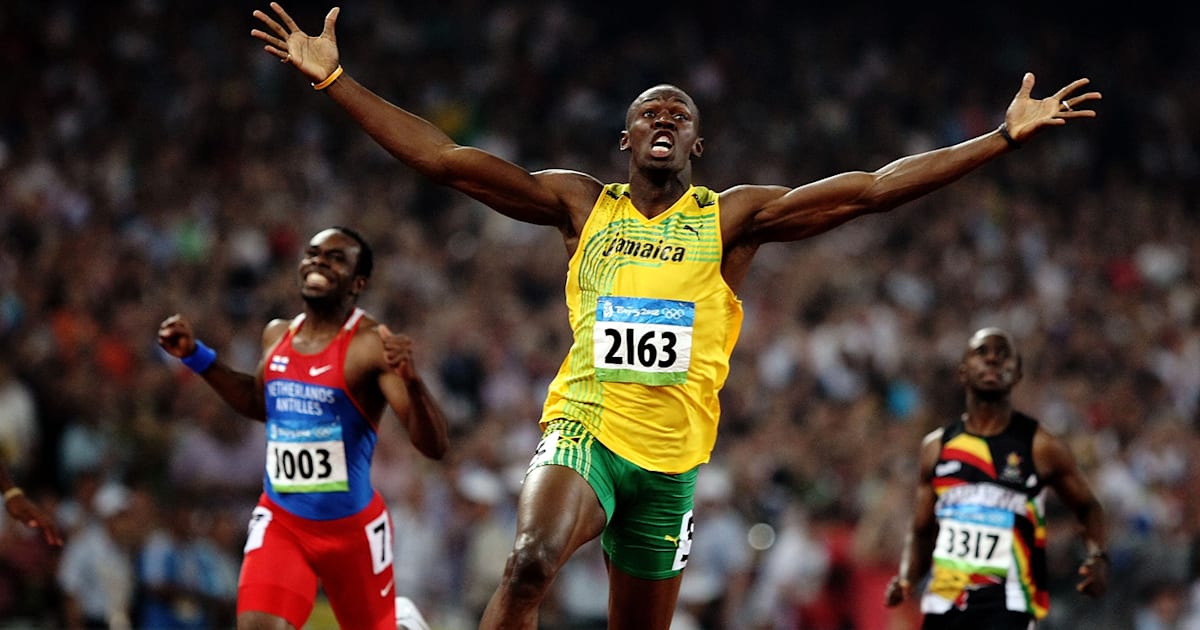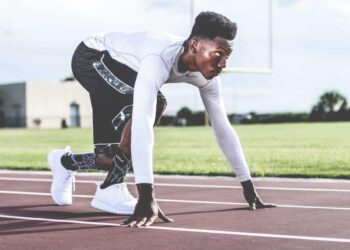Athletes Redefine Mental Toughness
The narrative of athletic greatness has long centered on physical prowess, raw talent, and tireless practice. Yet, in the contemporary landscape of high-stakes competition, a new, more profound dimension of success is taking center stage: mental toughness. This isn’t the old-school stoicism of gritting your teeth and pushing through pain; it’s a sophisticated, multi-faceted skill set that athletes are actively cultivating, moving beyond the traditional notion of “mind over matter.” They’re not just enduring pressure—they’re mastering it. This redefined approach to the psychological side of sport is revolutionizing how we understand peak performance, personal growth, and resilience in the face of adversity.
The past view of mental strength was often simplistic. A strong mind was a silent mind, one that never wavered, showed no weakness, and was impervious to doubt. Athletes were taught to “suck it up” and ignore their fears and anxieties. This model, however, was inherently flawed. It didn’t account for the human element—the very real pressures, traumas, and psychological battles that every person, including elite athletes, faces. The modern paradigm acknowledges this humanity. It views mental toughness not as the absence of struggle, but as the ability to navigate that struggle with skill and intention. It’s about building a robust internal framework that can withstand the inevitable shocks of a career in sport, from career-threatening injuries to devastating losses.
From Stoicism to Skill: The Shift in Mindset
The transformation of mental toughness began with a growing recognition that the brain is just as trainable as the body. Just as an athlete lifts weights to build muscle, they can use specific techniques to build psychological resilience. This move from a stoic, “tough-it-out” attitude to a skills-based approach is perhaps the most significant change. Athletes are now working with sports psychologists, performance coaches, and even neuroscientists to develop a personalized mental toolkit. This toolkit includes strategies for emotional regulation, focus, and recovery, which are now considered as vital as any physical training regimen. The goal is no longer to eliminate stress but to develop a healthy and effective response to it.
A. Mindfulness and Presence
The old way encouraged athletes to block out distractions. The new way teaches them to acknowledge distractions without getting swept away by them. Mindfulness is a key pillar of this. By practicing mindfulness, athletes learn to stay present in the moment, whether it’s during a critical play or a high-pressure free throw. This helps them avoid dwelling on past mistakes or worrying about future outcomes, which can lead to performance anxiety. It’s about being fully engaged in the task at hand, which enhances focus and allows for more intuitive, fluid movements.
B. Emotional Regulation and Vulnerability
Traditionally, showing emotion was a sign of weakness. Today, the opposite is true. Athletes are openly discussing their mental health struggles, which not only destigmatizes the issue but also allows them to seek help. This newfound vulnerability is a source of strength, not a liability. By understanding and regulating their emotions, athletes can prevent an emotional low from spiraling into a performance breakdown. They learn to process disappointment and use it as fuel for improvement, rather than letting it consume them.
C. Positive Self-Talk and Re-framing
The inner dialogue of an athlete is a powerful force. The modern approach focuses on cultivating positive and constructive self-talk. Instead of telling themselves, “I can’t do this,” they re-frame the thought to “This is challenging, but I am prepared for it.” This re-framing technique turns potential mental roadblocks into opportunities for growth. It helps them build self-efficacy—the belief in their own ability to succeed in a given situation. This isn’t about being unrealistically optimistic; it’s about being pragmatic and focusing on what is within their control.
D. The Power of Purpose
Beyond the scoreboard, many athletes are now finding their “why.” This deeper sense of purpose—whether it’s inspiring a new generation, raising awareness for a cause, or simply playing for the love of the game—acts as a powerful motivational anchor. When the external rewards fade or the pressure mounts, this internal purpose keeps them grounded and focused. It provides a source of intrinsic motivation that is more resilient than external validation like prize money or fame.
Technology and the Brain: The Next Frontier
The evolution of mental toughness is also being driven by advancements in technology. Wearable tech and data analytics, which were once exclusively used to measure physical performance, are now being applied to the brain. This is creating a more data-driven approach to psychological training.
A. Neurofeedback
This technology allows athletes to see their brain activity in real-time. By connecting to sensors, they can learn to control their brainwaves, which can help them achieve a state of relaxed focus. This is particularly useful for sports that require precise motor skills and a calm, centered mind, like archery or golf. Through repeated sessions, athletes can essentially train their brains to enter the optimal “flow state” more easily.
B. Virtual Reality (VR)
VR is no longer just for video games. It’s being used to simulate high-pressure game situations in a controlled environment. Athletes can practice their skills in front of a virtual crowd, complete with the roaring sounds and intense pressure of a packed stadium. This simulated exposure allows them to build psychological resilience without the risk of an actual failure. It’s a safe space to practice mental strategies and build confidence.
C. Biofeedback
Similar to neurofeedback, biofeedback tracks physiological responses like heart rate, muscle tension, and skin temperature. By learning to control these responses, athletes can manage their stress and anxiety levels. For example, a basketball player might use biofeedback to lower their heart rate before a crucial free throw. This gives them a tangible way to practice staying calm under pressure, turning an abstract concept into a measurable skill.
 The Role of Recovery and Holistic Well-Being
The Role of Recovery and Holistic Well-Being
The old model of mental toughness often ignored the critical need for rest and recovery. The mantra was to “always be on,” which inevitably led to burnout. Today, the concept of holistic well-being is paramount. Athletes are being taught that mental strength is not about constant output, but about knowing when to rest and recharge.
A. Sleep as a Superpower
Sleep is now recognized as a non-negotiable component of both physical and mental performance. It’s when the brain processes information, consolidates memories, and repairs itself. Elite athletes are using sleep tracking technology and working with sleep specialists to optimize their rest. A well-rested mind is a sharper, more resilient mind, better equipped to handle the stresses of competition.
B. Active Recovery
Mental recovery is just as important as physical recovery. This includes taking time away from the sport, engaging in hobbies, and spending time with family and friends. This active mental recovery helps prevent burnout and keeps the athlete’s passion for their sport alive. It’s about finding a healthy balance that allows them to return to training and competition feeling refreshed and motivated.
C. Nutrition for the Brain
What an athlete eats directly impacts their cognitive function and mood. A diet rich in nutrients that support brain health is now a core part of an athlete’s regimen. This includes healthy fats, antioxidants, and B vitamins. This focus on nutrition for the brain is a testament to the holistic view of mental toughness, where the mind and body are seen as inextricably linked.
 Conclusion: A New Era of Athleticism
Conclusion: A New Era of Athleticism
The redefinition of mental toughness is not a fleeting trend—it is a fundamental shift in the culture of sport. It is a move away from a simplistic, one-dimensional view of strength and toward a sophisticated, holistic understanding of human performance. Athletes are no longer just physical specimens; they are complex individuals who are actively working to master their minds. This new era of athleticism is more sustainable, more compassionate, and ultimately, more successful. By embracing vulnerability, leveraging technology, and prioritizing well-being, today’s athletes are not just winning games; they are setting a new standard for what it means to be truly tough, both on and off the field. This redefined mental fortitude is the secret ingredient in the recipe for sustained excellence and personal fulfillment in the demanding world of professional sports.








